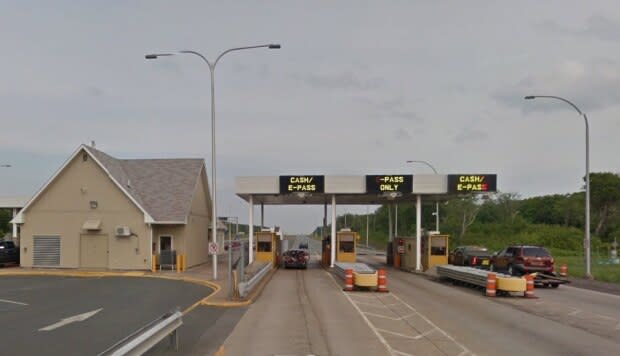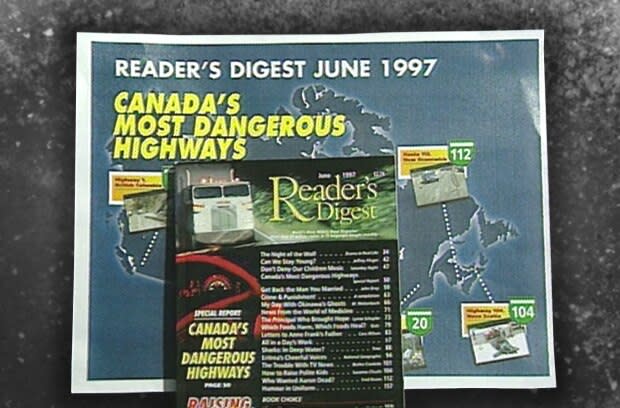For every toll paid at the Cobequid Pass, private lenders have pocketed half
Two years ago today, senior officials from Nova Scotia's Department of Transportation faced questions from the legislature's public accounts committee about the province's only toll highway, the Cobequid Pass.
They called it "a very good success story," a model project for so-called private-public partnerships in Canada. They assured the committee the debt incurred by the $124-million project would be paid off by April 1, 2020.
After that the tolls could be removed, the committee was told unequivocally.
Last week, Transportation Minister Lloyd Hines upended that commitment when he said tolls will remain in place for at least another year in order to pay for new projects along the 45-kilometre stretch of Highway 104 through northern Nova Scotia.
But what is arguably the province's smoothest and best-maintained section of highway has come at a steep price. Of the $348 million in tolls motorists have paid since it opened on Nov. 15, 1997, roughly half — $167 million — hasn't even gone to paying construction costs or maintenance.
It has instead been gobbled up by interest payments to the private investors who bankrolled part of the project, according to a senior manager in the Department of Transportation who briefed the CBC this week on condition they not be identified.
According to the contract signed between the province and investors in the 1990s, backers were guaranteed a roughly 10 percent per year return, and that interest was compounded every six months.

The Liberal government of John Savage authorized the Cobequid Pass construction through a controversial public-private partnership as a way to get a twinned highway built quickly, without further adding to the province's debt.
"Adding to the provincial debt was not an option for this project," transportation officials noted in a 1996 report.
At the time, the bypass was seen as a solution to dealing with a dangerous two-lane road through the Wentworth Valley, a section recognized by Reader's Digest as one of the worst highways in Canada and dubbed "Death Valley" by locals due to dozens of fatal accidents.
The Nova Scotia and federal governments each contributed $27.5 million toward construction. A Crown agency, the Highway 104 Western Alignment Corporation, was created to come up with the remaining funds to design, build and administer the toll highway. Private investors contributed a total of $66.4 million to the project.
Nova Scotia's then-auditor general, Roy Salmon, examined the project, still in its infancy, in his 1996 annual report. He concluded it would have been "significantly" cheaper for the province to simply borrow the money itself, rather than having private investors foot the bill.
Financial projections that approximately $151 million from tolls would be returned to the province, over the life of the 30-year contract, also never materialized.
Instead, all the money collected has gone to paying down the principal and interest, and to upkeep, improvements and running toll operations, including paying the roughly 60 full-time, part-time and contract employees who work for the Highway 104 Corporation.

Taxpayers have also chipped in almost $30 million to compensate for toll increases that were outlined in the contract but never implemented, and for discounts offered to frequent users.
So far, $35 million of the original debt has been repaid.
Although, as predicted by officials two years ago, there is now more than enough money in reserve accounts to wipe out the Highway 104 Corporation's debt (and to pay a roughly $10-million penalty for doing so before the 2026 expiry of the province's obligation to pay back private lenders), the plan now is to instead use some of that money for highway improvements.
This week, a senior staffer in the Transportation Department revealed there is no longer a definitive timeline for paying off the debt and eliminating the toll.
Hines told reporters a week ago the province is planning to build a pull-off for motorists who need a break, and a "satellite maintenance area" to station road crews and plows about midway along the Cobequid Pass.
He said he wanted those projects built before the province took over the highway and became responsible for its capital improvements and maintenance costs.

For PC MLA Elizabeth Smith-McCrossin, the decision is steeped in "government greed" rather than need.
"The legislation clearly states when the debt is paid the tolls are to be removed," she said. "The debt could be paid today and the tolls should be removed.
"It's an unfair tax on the people that live north of the Cobequid Pass, including my residents and citizens in Cumberland North."
Despite warnings by the auditor general in 1996 that the province scrutinize more closely the "costs and benefits" of public-private partnerships, the Savage government defended the deal unequivocally.
"The government is confident that all facets of this public-private partnership are sound, supportable and conceived in the best interests of Nova Scotia," transportation officials wrote in their official response to the auditor general's observations.

That optimistic view reins today in the minister currently responsible for the department.
In an email to CBC, Hines noted: "Behind the cost of the Cobequid Pass are lives that have been saved by having a safer piece of infrastructure in place for motorists.
"A highway that has reduced highway fatalities in the area can be considered a success."
As for the price paid to borrow from private investors, the minister concludes: "Any infrastructure that we build, whether built traditionally or as a P3 model, has interest and a cost of borrowing.
"Even as a traditional build, a highway would have significant interest costs because of the rate of borrowing at that time."


